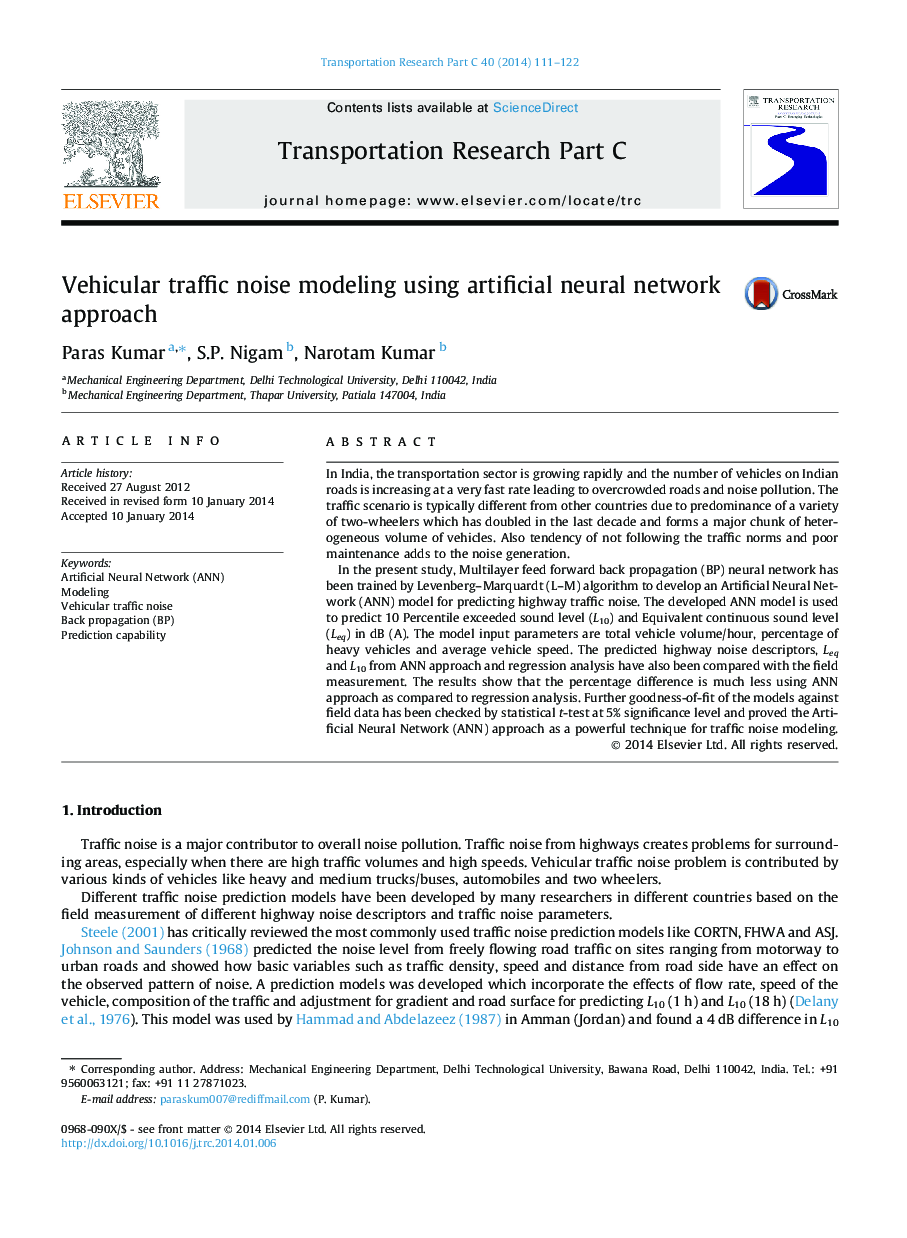| Article ID | Journal | Published Year | Pages | File Type |
|---|---|---|---|---|
| 525273 | Transportation Research Part C: Emerging Technologies | 2014 | 12 Pages |
•Back propagation neural network is used to develop highway traffic noise model.•Levenberg–Marquardt (L–M) algorithm is used to update weights in neural network.•Artificial neural network architecture (3-8-2) is found be optimum.•Neural network model has better prediction capability as compare to regression.•Neural Network approach is a powerful technique for traffic noise modeling.
In India, the transportation sector is growing rapidly and the number of vehicles on Indian roads is increasing at a very fast rate leading to overcrowded roads and noise pollution. The traffic scenario is typically different from other countries due to predominance of a variety of two-wheelers which has doubled in the last decade and forms a major chunk of heterogeneous volume of vehicles. Also tendency of not following the traffic norms and poor maintenance adds to the noise generation.In the present study, Multilayer feed forward back propagation (BP) neural network has been trained by Levenberg–Marquardt (L–M) algorithm to develop an Artificial Neural Network (ANN) model for predicting highway traffic noise. The developed ANN model is used to predict 10 Percentile exceeded sound level (L10) and Equivalent continuous sound level (Leq) in dB (A). The model input parameters are total vehicle volume/hour, percentage of heavy vehicles and average vehicle speed. The predicted highway noise descriptors, Leq and L10 from ANN approach and regression analysis have also been compared with the field measurement. The results show that the percentage difference is much less using ANN approach as compared to regression analysis. Further goodness-of-fit of the models against field data has been checked by statistical t-test at 5% significance level and proved the Artificial Neural Network (ANN) approach as a powerful technique for traffic noise modeling.
